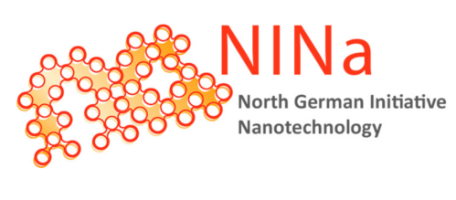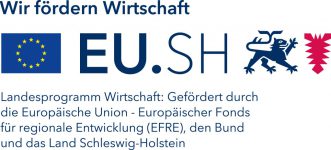 Photo: Anna-Lena Lundqvist
Photo: Anna-Lena Lundqvist
Sweden has been one of the world’s leaders in research, innovation, technology, and economic competitiveness for years. Within R&D the country holds a strong position in nanotechnology. In particular, the city of Gothenburg with its two universities plays a key role in this field. Cutting-edge activities of these two universities in the field of nanotechnology were presented in the symposium “Nanotechnology and Innovation from Gothenburg”, organized by Prof. Dr. Alexandre Dmitriev from the University of Gothenburg and Prof. Dr. Uta Klement from Chalmers University of Technology together with NINa SH.
Sweden has been one of the world’s leaders in research, innovation, technology, and economic competitiveness for years. Within R&D the country holds a strong position in nanotechnology. In particular, the city of Gothenburg with its two universities plays a key role in this field. Cutting-edge activities of these two universities in the field of nanotechnology were presented in the symposium “Nanotechnology and Innovation from Gothenburg”, organized by Prof. Dr. Alexandre Dmitriev from the University of Gothenburg and Prof. Dr. Uta Klement from Chalmers University of Technology together with NINa SH.
Program 11 May 2021
(all times in CEST)
13.00 - Greeting
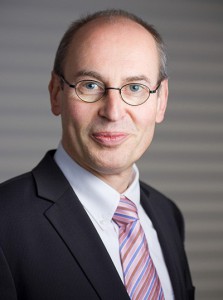 Professor Faupel researches and teaches at Kiel University. He has led the Chair for Multicomponent Materials since 1994. His research is focused, amongst others, on functional multicomponent nanomaterials and metal-polymer interfaces. Professor Faupel has already supervised and coordinated NINa since 2005.
Professor Faupel researches and teaches at Kiel University. He has led the Chair for Multicomponent Materials since 1994. His research is focused, amongst others, on functional multicomponent nanomaterials and metal-polymer interfaces. Professor Faupel has already supervised and coordinated NINa since 2005.13.05 - Research and innovation in the Gothenburg area
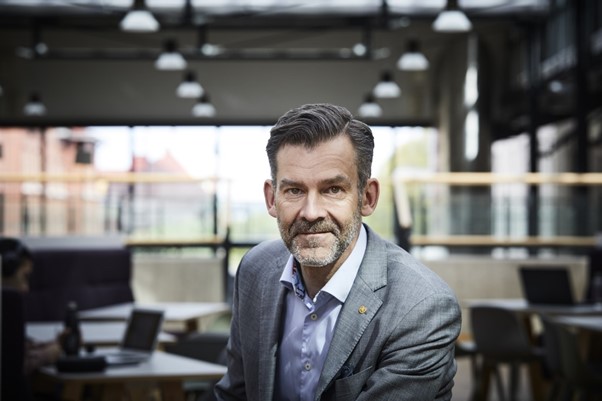 Dr. Fredrik Hörstedt is Vice President for utilisation, industry collaboration and sustainable development at Chalmers University of Technology. He is responsible for Chalmers innovation ecosystem and holds the overall responsibility for Chalmers’ interfaces with business, RTOs, public authorities and politics. He is a board member of the European Innovation Council and an advisor to the Swedish Government on research, innovation and digitalisation.
Dr. Fredrik Hörstedt is Vice President for utilisation, industry collaboration and sustainable development at Chalmers University of Technology. He is responsible for Chalmers innovation ecosystem and holds the overall responsibility for Chalmers’ interfaces with business, RTOs, public authorities and politics. He is a board member of the European Innovation Council and an advisor to the Swedish Government on research, innovation and digitalisation.
13.15 - Nanotech for superconductor-based quantum computers at the Wallenberg Center for Quantum Technology
The Wallenberg Center for Quantum Technology, WACQT, is a 12-year, 100-M€ initiative with the purpose of advancing Swedish academia and industry to the forefront of quantum technology, and to build a Swedish quantum computer. Our ambitious goal at Chalmers is to build a quantum computer with 100 superconducting qubits and to apply it to real computational problems that cannot be efficiently solved on a conventional computer. Such computationally hard problems are found, e.g., in optimization, quantum chemistry, materials science, and machine learning. Building a quantum computer requires a multi-disciplinary effort involving experimental and theoretical physicists, electrical and microwave engineers, computer scientists, software engineers, materials scientists and nanotechnology researchers. We are developing the superconducting quantum devices, control circuits, firmware, and methods required to engineer a full-stack quantum computer. In this talk I will show an overview of our quantum computer research and highlight our device development in the MC2 Nanotechnology Laboratory cleanroom at Chalmers.
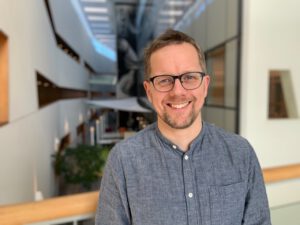 Jonas Bylander leads a research team focused on developing quantum computers and applying them to computational “use cases” – hard problems that can’t be solved on conventional computers. Jonas has a PhD in Physics from Chalmers. After graduate school he worked as a researcher at MIT for five years, prior to taking up a faculty position back at Chalmers, in 2013. He is currently head of the Quantum Technology Laboratory and a principal investigator in the European Flagship program on Quantum Technology and in the Wallenberg Center for Quantum Technology, WACQT, an initiative aimed to bring Swedish academia and industry to the forefront of quantum technology.
Jonas Bylander leads a research team focused on developing quantum computers and applying them to computational “use cases” – hard problems that can’t be solved on conventional computers. Jonas has a PhD in Physics from Chalmers. After graduate school he worked as a researcher at MIT for five years, prior to taking up a faculty position back at Chalmers, in 2013. He is currently head of the Quantum Technology Laboratory and a principal investigator in the European Flagship program on Quantum Technology and in the Wallenberg Center for Quantum Technology, WACQT, an initiative aimed to bring Swedish academia and industry to the forefront of quantum technology.
13.40 - Photonics, Brain Connectivity, Deep Learning, and Entrepreneurship at GU Physics
The Soft Matter Lab at Gothenburg University focuses on research at the nexus between photonics, brain connectivity and deep learning. In this presentation, I’ll briefly show our activities along these research directions that can be most interesting for an industry-academia partnership. These include: (1) The development of tools for quantitative digital microscopy enhanced by deep learning, in particular with the recent launch of the Python-based software platform DeepTrack 2.0. (2) The development of tools for the study of brain connectivity, especially within the context of the development of diagnostic and therapeutic tools for neurodegenerative diseases, in particular with the upcoming launch of the Matlab-based software platform Braph 2.0. (3) The development of tools of tools bridging photonics and machine learning. Finally, I’ll briefly present our new startup companies Lucerio Bio and IFLAI.
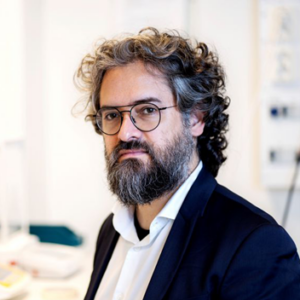 Giovanni Volpe is Professor at the Physics Department at the University of Gothenburg (Gothenburg, Sweden), where he has been leading the Soft Matter Lab since 2016. He has established a strong research group of 18 people (3 postdocs, 12 PhD students, 3 Master students, http://www.softmatterlab.org ) with an externally-funded, ambitious and interdisciplinary research program that combines soft condensed matter, optical manipulation, nanotechnology, and machine learning. He has attracted external funding exceeding 6M €, including several national and European grants such as the ERC-StG ComplexSwimmers (2016-2021) and the ERC-CoG MAPEI (2021-2026). He is a co-funder of the startup companies Lucerio Bio and IFLAI.
Giovanni Volpe is Professor at the Physics Department at the University of Gothenburg (Gothenburg, Sweden), where he has been leading the Soft Matter Lab since 2016. He has established a strong research group of 18 people (3 postdocs, 12 PhD students, 3 Master students, http://www.softmatterlab.org ) with an externally-funded, ambitious and interdisciplinary research program that combines soft condensed matter, optical manipulation, nanotechnology, and machine learning. He has attracted external funding exceeding 6M €, including several national and European grants such as the ERC-StG ComplexSwimmers (2016-2021) and the ERC-CoG MAPEI (2021-2026). He is a co-funder of the startup companies Lucerio Bio and IFLAI.
14.05 - In situ electron microscopy for site-specific correlation between atomic structure and properties
In situ electron microscopy enables site-specific correlation between atomic structure and properties with high spatial resolution. The effect of electric fields, light, mechanical strain and temperature on both structure and properties can be quantitatively imaged and studied using spectroscopy. The obtained knowledge is used to tune the properties of advanced materials and devices. Catalytic activity of metal nanoparticles [1] and electrical properties of semiconducting nanowires [2-4] are examples where the strain induced effects have a strong influence on the properties and performances. Electric fields can change the surface structure of materials [5] and the thermal handling capabilities can be changed by the presence of a one atomic layer thin surface film [6]. New aspects of material properties and mechanisms, not obvious from measurements on the macro scale, can be revealed using in-situ electron microscopy. The knowledge is crucial for not only the understanding of the mechanisms that are involved but also for the design or materials and devices with tailored properties.
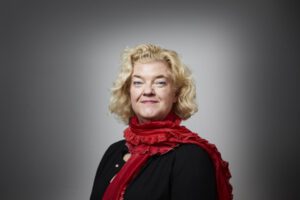 Eva Olsson is a Professor of Experimental Physics at Chalmers University of Technology and a member of the Royal Swedish Academy of Sciences. Her research Division involves advanced imaging and spectroscopic methods of high-resolution electron microscopy for site specific correlation between material structure and properties. Of particular interest is the fundamental understanding of transport mechanisms of charges and matter. The aim is to enable the design of new materials and structures with tailored properties for energy, quantum and health technology.
Eva Olsson is a Professor of Experimental Physics at Chalmers University of Technology and a member of the Royal Swedish Academy of Sciences. Her research Division involves advanced imaging and spectroscopic methods of high-resolution electron microscopy for site specific correlation between material structure and properties. Of particular interest is the fundamental understanding of transport mechanisms of charges and matter. The aim is to enable the design of new materials and structures with tailored properties for energy, quantum and health technology.
14.30 - Unveiling the secret of surfaces generated in hard machining
Hard turning and grinding are finishing processes for the manufacture of precision mechanical components. However, a major concern with respect to service performance (e.g. in bearing races receiving high contact stresses) is white layer (WL) formation on the component surface. WLs are microstructure alterations which are generally considered detrimental to fatigue life and wear resistance. But WLs can also be regarded as process-induced functional surfaces which result in improved wear resistance and produce compressive residual stresses which may significantly increase the component’s fatigue life.
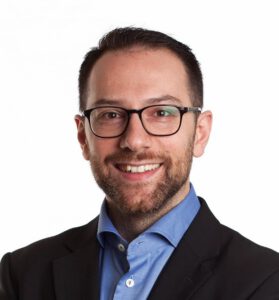 Seyed Hosseini, PhD, works as senior researcher at the Research Institutes of Sweden (RISE AB) in the field of additive and subtractive manufacturing processes. Seyed is also working as guest researcher at the Department of Industrial and Materials Science. He focuses primarily of how the materials are affected by the manufacturing processes and potentially how the material or the microstructure could be optimized to improve the product performances. By combining different characterization tools like XRD, SEM, TEM and APT with thermodynamic and kinetic simulations Seyed has during his research in the field of metal cutting developed a phenomenological model describing the microstructural evolution in the hard-turning process. Currently, Seyed is working on the up-scaling of research results in the field of metal cutting into industrial benefit to push for improved product performances and reduced CO2-footprint.
Seyed Hosseini, PhD, works as senior researcher at the Research Institutes of Sweden (RISE AB) in the field of additive and subtractive manufacturing processes. Seyed is also working as guest researcher at the Department of Industrial and Materials Science. He focuses primarily of how the materials are affected by the manufacturing processes and potentially how the material or the microstructure could be optimized to improve the product performances. By combining different characterization tools like XRD, SEM, TEM and APT with thermodynamic and kinetic simulations Seyed has during his research in the field of metal cutting developed a phenomenological model describing the microstructural evolution in the hard-turning process. Currently, Seyed is working on the up-scaling of research results in the field of metal cutting into industrial benefit to push for improved product performances and reduced CO2-footprint.
U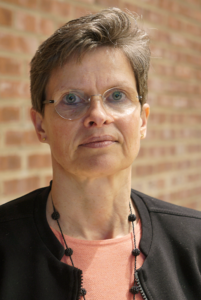 ta Klement is Professor at the Department of Industrial and Materials Science. She heads the Division of Materials and Manufacture and leads the Surface and Microstructure Characterization research group. She works dedicatedly with materials characterization and uses electron microscopy (SEM, TEM) in combination with all necessary complementary techniques to examine the structure-property relationship of engineering materials such as machined surfaces and electrodeposited, thermal sprayed, and additive manufactured materials. Currently, focus is on the development of multifunctional graphene-containing engineering materials with the aim of combining fundamental studies with industrial applications.
ta Klement is Professor at the Department of Industrial and Materials Science. She heads the Division of Materials and Manufacture and leads the Surface and Microstructure Characterization research group. She works dedicatedly with materials characterization and uses electron microscopy (SEM, TEM) in combination with all necessary complementary techniques to examine the structure-property relationship of engineering materials such as machined surfaces and electrodeposited, thermal sprayed, and additive manufactured materials. Currently, focus is on the development of multifunctional graphene-containing engineering materials with the aim of combining fundamental studies with industrial applications.
14.55 - Coffee break
15.15 - Managing visible light at the nanoscale – ultrafast magnetic hard-drives, warm solar windows and more
Optical nanoantennas (i.e., antennas for light) work similarly to the regular, say, microwave antennas in mobile phones – they capture electromagnetic signal, focus it and process it further. Optical nanoantennas do precisely this but with regular visible light, so they have to be sized in the nanometer scale. I’ll show how we use this to focus light to the nanometer-sized spots to control the magnetic writing in the future ultrafast and ultra-dense magnetic hard-drives, but also how to create sun-warmed transparent windows for energy-saving in the buildings or how to smart-tag various materials with nanotechnology of light to improve their recycling for the greener world.
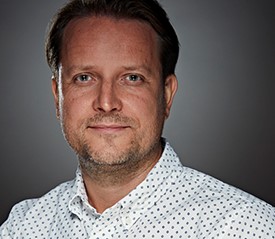 Alexandre Dmitriev obtained his PhD in Physics 2000-2003 on low-dimensional supramolecular systems with metal-organic coordination at Max-Planck-Institute for Solid State Research (Stuttgart, Germany) and EPFL (Lausanne, Switzerland). From mid-2004 – at Chalmers University of Technology (Gothenburg, Sweden), first as EU Marie Curie Fellow, and later as Swedish Research Council Assistant professor, currently – Full Professor at the University of Gothenburg. Visiting professor at Stanford (USA) in 2016-2017 and 2018. Holder of the Swedish Foundation for Strategic Research Future Research Leader and Strategic Research Expedition awards (2010, 2019). Chair (2010-2012) of one of formerly largest European research network in plasmonics (COST Plasmonics), Fellow of the Mobility for Regional Excellence of the Västra Götaland Region, Erskine Visiting Fellow at the University of Canterbury (New Zealand). Research and innovation focus on physics and chemistry of light-matter interactions at the nanoscale.
Alexandre Dmitriev obtained his PhD in Physics 2000-2003 on low-dimensional supramolecular systems with metal-organic coordination at Max-Planck-Institute for Solid State Research (Stuttgart, Germany) and EPFL (Lausanne, Switzerland). From mid-2004 – at Chalmers University of Technology (Gothenburg, Sweden), first as EU Marie Curie Fellow, and later as Swedish Research Council Assistant professor, currently – Full Professor at the University of Gothenburg. Visiting professor at Stanford (USA) in 2016-2017 and 2018. Holder of the Swedish Foundation for Strategic Research Future Research Leader and Strategic Research Expedition awards (2010, 2019). Chair (2010-2012) of one of formerly largest European research network in plasmonics (COST Plasmonics), Fellow of the Mobility for Regional Excellence of the Västra Götaland Region, Erskine Visiting Fellow at the University of Canterbury (New Zealand). Research and innovation focus on physics and chemistry of light-matter interactions at the nanoscale.
15.40 - 2D material-based technology for industrial applications – 2D-TECH
The Competence Centre “2D-material based technology for industrial applications” (2D-TECH) is a joint research and innovation Centre between Chalmers University of Technology and Industrial partners stablished in 2020, and is part of the Competence Centre program run by the Swedish Governmental Agency for Innovation Systems (VINNOVA). The mission of 2D-TECH is to establish an internationally competitive Swedish hub for excellent research and industrial utilization of 2D materials. Our research agenda consists of 15 projects organized in four Research and Innovation: 1) Multifunctional composites, 2) Sustainable energy, 3) Electronics, and 4) Emerging materials. In this talk I will describe the research highlights during the first year of operations, as well as the collaboration opportunities with academic and industrial partners of our center.
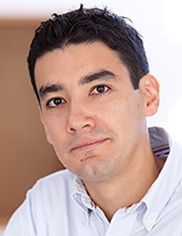 Samuel Lara-Avila is Associate Research Professor at the Quantum Device Physics Laboratory, Chalmers University of Technology (Sweden). He specializes on the development, fabrication and study of electron transport properties of low-dimensional systems as well as their use in practical electronics. His work has been recognized with the 2014 International Union of Pure and Applied Physics (IUPAP) Young Scientist Prize in Fundamental Metrology, in recognition of “outstanding contribution to the understanding of quantum electrical transport in epitaxial graphene, leading to the development of a novel quantum Hall resistance standard”. His current work includes interaction between terahertz radiation and charge carriers in graphene, and the development of new 2D materials. He serves as Board Member in the Swedish Physical Society-condensed matter and nano physics, Visiting Scientist at National Physical Laboratory (UK), and Board member at Graphensic AB. Since 2021 he is also Director of the Vinnova competence center 2D-TECH, and the Graphene Center at Chalmers.
Samuel Lara-Avila is Associate Research Professor at the Quantum Device Physics Laboratory, Chalmers University of Technology (Sweden). He specializes on the development, fabrication and study of electron transport properties of low-dimensional systems as well as their use in practical electronics. His work has been recognized with the 2014 International Union of Pure and Applied Physics (IUPAP) Young Scientist Prize in Fundamental Metrology, in recognition of “outstanding contribution to the understanding of quantum electrical transport in epitaxial graphene, leading to the development of a novel quantum Hall resistance standard”. His current work includes interaction between terahertz radiation and charge carriers in graphene, and the development of new 2D materials. He serves as Board Member in the Swedish Physical Society-condensed matter and nano physics, Visiting Scientist at National Physical Laboratory (UK), and Board member at Graphensic AB. Since 2021 he is also Director of the Vinnova competence center 2D-TECH, and the Graphene Center at Chalmers.
16.05 - Biomimetic Design of Medical Devices
Use of synthetic materials for replacement of injured or lost body parts, i.e., implants, is today common in surgical procedures. An aging population and current lifestyle trends, with less physical activity, have resulted in that implant-based surgeries are being performed on patients at an earlier age and that the implants are needed to last for longer periods of time. This calls for the development of new biomaterials for producing implants having improved integration properties. However, implants with improved integration may also be prone to bacterial colonization, resulting in that they could possess higher risks for biomaterial associated infection, leading to a status que or even poorer outcome over the life span of the implant. As a consequence, it is important to develop materials that can selectively prefer human cell interaction and at the same time avoid bacterial attachment.
In this talk, novel concepts for the development of medical devices based on biomimetic approaches will presented. Specifically, the use of synthetic bone materials for improved bone-integration1 and use of antimicrobial peptides for preventing bacterial infections2 will be shown and discussed. The presentation will cover the material formation procedures, the clinical performance, and the translation into the clinic. The latter being a result from the foundation of start-up companies.
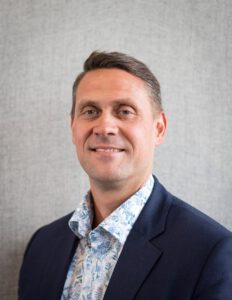 Martin Andersson is Professor and Deputy Head of Department of Chemistry and Chemical Engineering at Chalmers University of Technology. His research interests are in material science and surface chemistry with focus on formation of nanomaterials towards biological applications scientific papers. towards biological applications. In addition to research, Martin is interested in entrepreneurship and is the co-founder of Promimic AB, Amferia AB, Aquammodate AB and Vitroprobe Analytics AB.
Martin Andersson is Professor and Deputy Head of Department of Chemistry and Chemical Engineering at Chalmers University of Technology. His research interests are in material science and surface chemistry with focus on formation of nanomaterials towards biological applications scientific papers. towards biological applications. In addition to research, Martin is interested in entrepreneurship and is the co-founder of Promimic AB, Amferia AB, Aquammodate AB and Vitroprobe Analytics AB.
16.30 - Nanotech-tailored metal additive manufacturing
The competence centre for additive manufacturing – metals (CAM2) involves core co-operation between academia and Swedish industry with particular focus on the development of powder, materials and processing for powder-based additive manufacturing. One important line of approach is therefore the development of novel materials for laser powder bed fusion where the materials design is tailored to the unique rapid solidification conditions characteristic for the actual process. This involves an elaborate nanotech-tailored approaches to set the microstructure and properties of the manufactured parts. The approach involves the combination of theory and modelling, experimental development and advanced microstructure characterization as well as performance assessment. The development of additive manufacturing is now such that obtaining fully dense as-built material is hardly a challenge anymore, while there is a great interest in further tuning to explore new materials with unique performance. The co-operation between Chalmers and Höganäs constitutes an important and viable example of industry-academia co-operation in this context and we will share some examples that illustrate how nano-tech solutions can be used to tailor microstructure development in additive manufacturing.
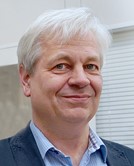
Professor Lars Nyborg leads a research group on Powder Metallurgy and Additive Manufacturing and focuses current research on materials development in additive manufacturing (AM) and sintering of powder-based materials. The former research line is connected to the research area novel AM material within the competence centre for additive manufacturing – metals (CAM2). One approach is the nanotech design of powder chemistry and addition of nanoscale particles tune the as-fabricated microstructures in laser powder bed fusion. Another approach is the application of nanoparticles as sintering aid in ferrous powder sintering. The research is run in close co-operation with industry, national co-operation via a framework grant from Foundation for Swedish Foundation for Strategic Research and international co-operation with for example Polytech Torino, Polytech Milano and CSEM within EU-projects.
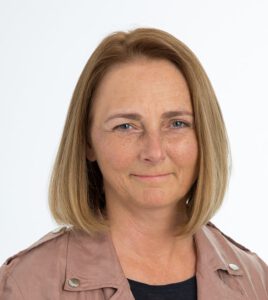 Adjunct Professor Karin Frisk focuses current research on development of powder materials for additive manufacturing and surface coating applications, within CAM2 and at Höganäs AB. Computational alloy design based on microstructure predictions, with goal to provide new alloy compositions that are tailored for rapid solidification of relevance for these applications. The modeling is applied to increase the pace of development of new powder alloy compositions, and to increase our understanding of the coupling of microstructure to properties.
Adjunct Professor Karin Frisk focuses current research on development of powder materials for additive manufacturing and surface coating applications, within CAM2 and at Höganäs AB. Computational alloy design based on microstructure predictions, with goal to provide new alloy compositions that are tailored for rapid solidification of relevance for these applications. The modeling is applied to increase the pace of development of new powder alloy compositions, and to increase our understanding of the coupling of microstructure to properties.
16.55 - Wrap up and Closing
Contact
Organizers
 Alexandre Dmitriev obtained his PhD in Physics 2000-2003 on low-dimensional supramolecular systems with metal-organic coordination at Max-Planck-Institute for Solid State Research (Stuttgart, Germany) and EPFL (Lausanne, Switzerland). From mid-2004 – at Chalmers University of Technology (Gothenburg, Sweden), first as EU Marie Curie Fellow, and later as Swedish Research Council Assistant professor, currently – Full Professor at the University of Gothenburg. Visiting professor at Stanford (USA) in 2016-2017 and 2018. Holder of the Swedish Foundation for Strategic Research Future Research Leader and Strategic Research Expedition awards (2010, 2019). Chair (2010-2012) of one of formerly largest European research network in plasmonics (COST Plasmonics), Fellow of the Mobility for Regional Excellence of the Västra Götaland Region, Erskine Visiting Fellow at the University of Canterbury (New Zealand). Research and innovation focus on physics and chemistry of light-matter interactions at the nanoscale.
Alexandre Dmitriev obtained his PhD in Physics 2000-2003 on low-dimensional supramolecular systems with metal-organic coordination at Max-Planck-Institute for Solid State Research (Stuttgart, Germany) and EPFL (Lausanne, Switzerland). From mid-2004 – at Chalmers University of Technology (Gothenburg, Sweden), first as EU Marie Curie Fellow, and later as Swedish Research Council Assistant professor, currently – Full Professor at the University of Gothenburg. Visiting professor at Stanford (USA) in 2016-2017 and 2018. Holder of the Swedish Foundation for Strategic Research Future Research Leader and Strategic Research Expedition awards (2010, 2019). Chair (2010-2012) of one of formerly largest European research network in plasmonics (COST Plasmonics), Fellow of the Mobility for Regional Excellence of the Västra Götaland Region, Erskine Visiting Fellow at the University of Canterbury (New Zealand). Research and innovation focus on physics and chemistry of light-matter interactions at the nanoscale.
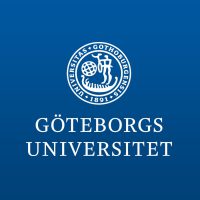
 Uta Klement is Professor at the Department of Industrial and Materials Science. She heads the Division of Materials and Manufacture and leads the Surface and Microstructure Characterization research group. She works dedicatedly with materials characterization and uses electron microscopy (SEM, TEM) in combination with all necessary complementary techniques to examine the structure-property relationship of engineering materials such as machined surfaces and electrodeposited, thermal sprayed, and additive manufactured materials. Currently, focus is on the development of multifunctional graphene-containing engineering materials with the aim of combining fundamental studies with industrial applications.
Uta Klement is Professor at the Department of Industrial and Materials Science. She heads the Division of Materials and Manufacture and leads the Surface and Microstructure Characterization research group. She works dedicatedly with materials characterization and uses electron microscopy (SEM, TEM) in combination with all necessary complementary techniques to examine the structure-property relationship of engineering materials such as machined surfaces and electrodeposited, thermal sprayed, and additive manufactured materials. Currently, focus is on the development of multifunctional graphene-containing engineering materials with the aim of combining fundamental studies with industrial applications.

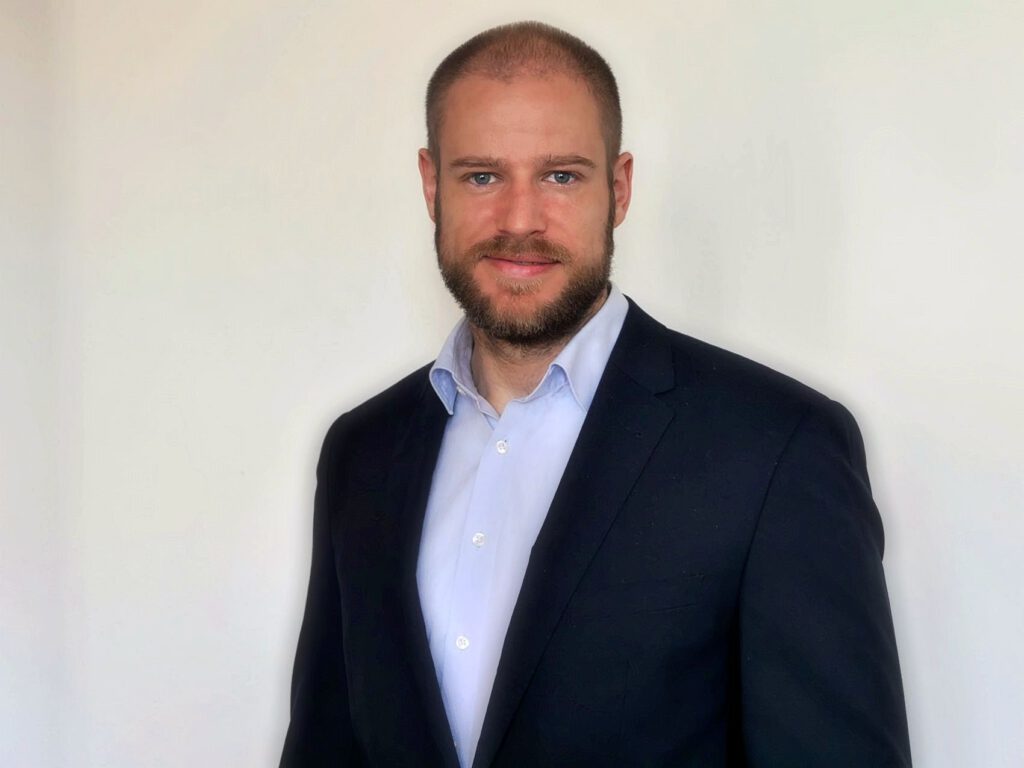 Dr. Christian Ohrt is responsible for the operational management of NINa SH since July 2015. He holds a PhD in materials science from Kiel University. He has worked for NINa already scince 2012. Please do not hesitate to contact him for all questions and enquiries regarding NINa SH and the symposium.
Dr. Christian Ohrt is responsible for the operational management of NINa SH since July 2015. He holds a PhD in materials science from Kiel University. He has worked for NINa already scince 2012. Please do not hesitate to contact him for all questions and enquiries regarding NINa SH and the symposium.
